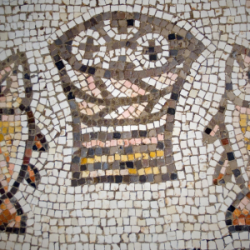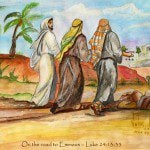Welcome readers! Please subscribe through the buttons on the right.
(Read this series from its beginning here.)

Again, although the passage we began with focuses on bearing fruit rather than being a dead or withered branch that bears nothing, in 1 John 2:6 we see that the kind of fruit one bears matters too. The synoptic gospels make this point :
“No good tree bears bad fruit, nor does a bad tree bear good fruit. Each tree is recognized by its own fruit. People do not pick figs from thorn bushes, or grapes from briers.” (Luke 6:43-44)
So what was the fruit of Jesus’ life? And what should be the fruit of the lives of those who claim to follow that Jesus?
In other words, what does it mean for Christians to live as Jesus did?
A few things come to mind almost immediately.
The Jesus of the gospel story cared about economic justice for the poor:
“They devour widows’ houses and for a show make lengthy prayers.” (Mark 12:40 cf. Mark 12:42-43)
“Looking at his disciples, he said: ‘Blessed are you who are poor, for yours is the kingdom of God.” (Luke 6:20)
“I needed clothes and you clothed me.” (Matthew 25:36)
The Jesus of the story was in favor of wealth redistribution:
“Sell your possessions and give to the poor.” (Luke 12:33)
The Jesus of the story cared about centering those being marginalized:
“So the last will be first, and the first will be last.” (Matthew 20:16)
The Jesus of the story taught for debt forgiveness:
“And forgive us our debts, as we also have forgiven our debtors.” (Matthew 6:12)
“Neither of them had the money to pay him back, so he forgave the debts of both.” (Luke 7:42 cf. Matthew 18:27)
“The Spirit of the Lord is on me . . . to proclaim the year of the Lord’s favor.” (Luke 4:18-19)
The Jesus of the story cared about incarcerated people:
“The Spirit of the Lord is on me . . . to proclaim freedom for the prisoners.” (Luke 4:18-19)
“I was in prison and you came to visit me.” (Matthew 25:36)
The Jesus of the story cared about liberating the oppressed:
“The Spirit of the Lord is on me, because he has anointed me . . . to set the oppressed free. (Luke 4:18-19)
The Jesus of the story cared about making sure the sick in society were taken care of:
“I was sick and you looked after me” (Matthew 25:36)
“Jesus went throughout Galilee, teaching in their synagogues, proclaiming the good news of the kingdom, and healing every disease and sickness among the people.” (Matthew 4:23)
“When Jesus landed and saw a large crowd, he had compassion on them and healed their sick.” (Matthew 14:14)
The Jesus of the story taught nonviolence:
“‘Put your sword back in its place,’ Jesus said to him, ‘for all who draw the sword will die by the sword.’” (Matthew 26:52)
And so much more.
How should we apply these teachings to our social context and the challenges we are facing today? We’ll discuss that next.

















